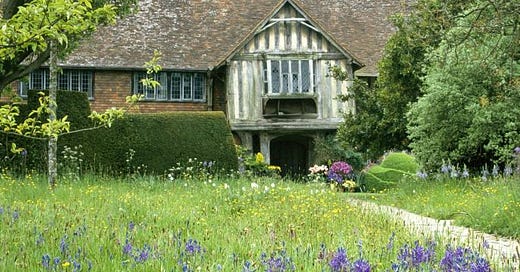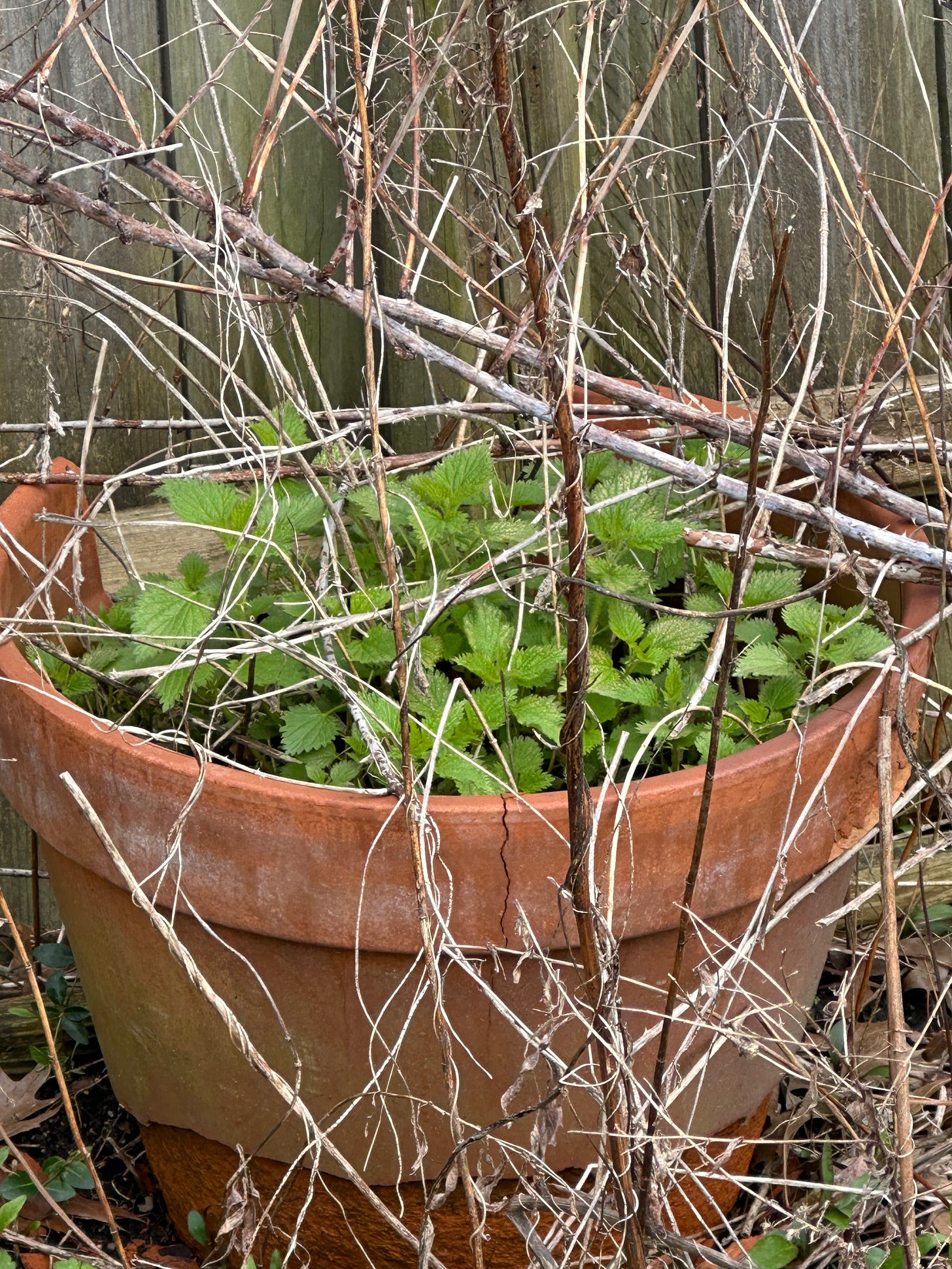We tend to think of conservation as something that happens far away—in forests, oceans, and remote preserves. But the real work? It begins much closer to home. It begins in our yards, in the soil between our toes, and in the small choices we make each season.
Photographer unknown
This spring, as the earth stretches awake, I invite you to see your space—whatever it may be—as sacred. Whether you tend a wild garden, a patch of lawn, or a few pots of herbs on the porch, you are in relationship with the land. You are a keeper of the soil, a feeder of the pollinators, a guardian of beauty and biodiversity.
In medieval times, gardens were often planted not just for food or formality, but for joy—what they called a flowery mead. These were lush, untamed spaces filled with wildflowers, bees, butterflies, and soft grasses—places to walk, to dream, to rest. Not manicured, but alive. There’s deep wisdom in that: beauty and biodiversity belong together. When we allow our yards to hold some of that wildness, we invite magic, medicine, and memory back into the landscape.¹
Read my article about Flowery Meads Here!
When we let the clover bloom, resist the urge to over-tidy, or plant something native and nourishing, we’re doing more than tending a yard. We’re participating in something ancient and essential. We’re saying: I belong to this earth, and I choose to care for her. It took me a long time to convince Jim to let the dandelions and clover take over the back yard, but now he thinks that its as beautiful as I do.
This is conservation—not as activism or abstraction, but as reverent tending. The kind that begins right where you are, with what you already have.
Seasonal Garden Wisdom: 5 Ways to Welcome Wildness Back
Leave the Leaves – What looks messy to us may be shelter for pollinators, frogs, and fireflies. Let the leaf litter linger a bit longer.
Grow Native – Native plants are the backbone of local ecosystems. They feed the birds and insects that know them by name.
Resist the Spray – Skip the chemicals. Dandelions feed bees. So-called “weeds” might be wild medicine. Let nature balance herself.
Create Habitat – A brush pile, a water dish, a bee house—small gestures that ripple outward into wild invitation.
Harvest with Gratitude – Forage mindfully. Take only what you need. Leave some for the creatures and the future.
Journaling Prompt:
What does it mean to be a steward of your place?
Where are you being called to let go, leave space, or begin again this season?
A Note on Foraging Carefully
Spring is generous, but she asks us to move gently.
Ramps, with their bright garlicky flavor and green fire, grow slowly and are easily over harvested. If you find them in the wild, take just one leaf per plant—or better still, start your own patch at home and let the forest rest. I’m slowly starting a patch of my own!
Nettles are fierce and abundant. Their sting is real—fine hairs laced with formic acid will remind you not to take them lightly. But once you’ve blanched them, their wild edge softens into deep nourishment. Nettles are mineral-rich powerhouses: full of calcium, iron, magnesium, potassium, and chlorophyll. They nourish the blood, the nervous system, and the kidneys. They’re like spring’s first green elixir—both grounding and energizing.
This is my really large pot of Stinging Nettles. They come up every year , and keeping them potted like this keeps them from spreading.
When you harvest either of these, do it with presence. Say thank you. Take your time. Leave some behind.
This is the old way. This is the wise way.
Wild Recipe: Nettle & Ramp Pesto with Pistachios and Smoke
This pesto tastes like spring woods and green vitality.
A little wild. A little luxurious. Just right. I usually triple it at the very least!
Ingredients:
1 cup blanched nettle leaves (wear gloves!)
1/2 cup chopped ramps (white + green parts)
1/3 cup shelled unsalted pistachios
1/2 cup avocado oil (or to taste)
1/2 cup finely grated smoked cheese (Smoked gouda or smoked pecorino work beautifully)
Juice of 1/2 lemon
Salt and freshly cracked pepper to taste
Instructions:
Bring a pot of water to a boil. Blanch the nettles for 60 seconds, then transfer to an ice bath. Drain and squeeze gently to remove excess water.
In a food processor, pulse pistachios, blanched nettles, and ramps until coarsely chopped.
Add lemon juice, cheese, and salt/pepper. With the motor running, drizzle in avocado oil until you reach your desired consistency.
Taste and adjust. Add a little more lemon or oil if needed.
Use immediately, or store in a jar with a thin layer of oil on top. Keeps for about a week in the fridge.
Serve with roasted root vegetables, grilled sourdough, or stirred into a bowl of warm grains.
Ritual: A Backyard Benediction
Step outside. Barefoot if you can. Let the air touch your skin. Let your feet remember the ground.
Place your hand gently on the earth—or on the bark of a tree.
Breathe. Soften. Speak softly:
“Thank you for holding me.
Thank you for feeding me.
May I care for you as you have cared for me.
May this patch of earth be blessed by my tending,
and may my heart remember: I belong here.”
Let it be enough. This is the work.
If this nourished you…
This is the kind of post I share each week with paid subscribers of Forage & Gather—seasonal recipes, herbal rituals, earth wisdom, and journal prompts to help you root into a slower, more sacred rhythm of living.
If you’re feeling the call to reconnect with what’s real, I’d love to welcome you inside.
Your support helps me keep this work rooted, resourced, and growing.
There’s always room at my table.
— With love,
Beth
Footnote:
¹ The term flowery mead refers to a medieval garden style that celebrated wild beauty and seasonal flowering, often found in monastic gardens, manor grounds, and early poetic traditions. It represented the joy of nature’s abundance and the human desire to dwell in harmony with the land.









